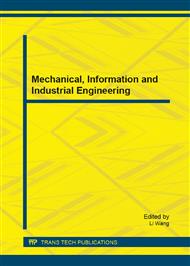p.405
p.411
p.415
p.420
p.424
p.429
p.433
p.438
p.442
Matpower CPF Program Improvement and Steady-State Voltage Stability Analysis
Abstract:
In steady-state voltage stability analysis, Continuation power flow (CPF) method is widely used for it can track power flow solution at the critical voltage point. The existing matpower CPF program can only simulate PV curve of a single bus when load increases at one certain bus. In this paper, original CPF program will be modified to be more flexible and in line with the actual situation. Several indices will be proposed to discuss how to determine the first crash bus (namely the system vulnerabilities) when load increases at multiple buses. Simulation results of a regional power grid in northern China verify the validity and practicability of the proposed method.
Info:
Periodical:
Pages:
424-428
Citation:
Online since:
March 2015
Authors:
Price:
Сopyright:
© 2015 Trans Tech Publications Ltd. All Rights Reserved
Share:
Citation:


